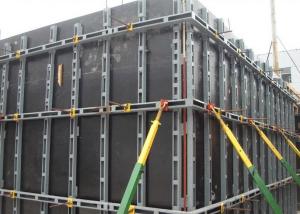Plywood, a versatile and widely used material, has become a staple in construction, furniture making, and various DIY projects. With its unique layered structure, it offers both strength and flexibility, making it a favorite among professionals and hobbyists alike. But one of the first things you’ll need to know when working with plywood is the different sizes available. In this guide, we’ll explore the most common dimensions of plywood, and how to choose the right one for your project.
The Basics of Plywood Dimensions
Plywood comes in a variety of standard sizes, but the most common are 4X8 feet, known as a sheet size. This is the standard size you’ll find in most stores and is the basis for many of the other dimensions available. The thickness of plywood can also vary, with common options being 1/4 inch, 1/2 inch, 3/4 inch, and 1 inch. These thicknesses are often referred to as 4/4, 5/4, 6/4, and 8/4 respectively.
Why Size Matters
The size of the plywood you choose can greatly affect your project. Larger sheets can cover more area but can be more difficult to handle and transport. Thinner plywood is lighter and easier to work with, but it may not provide the structural support you need. It’s important to consider the size and thickness of your plywood carefully to ensure it meets the needs of your project.
Common Plywood Sizes and Their Uses
Let’s dive into some of the most common plywood sizes and where they might be best used:
4X8 Feet
This is the standard size for plywood sheets. It’s great for large projects where you need to cover a lot of area quickly. It’s also versatile enough to be used for a variety of purposes, from building furniture to constructing walls.
2X4 Feet
For smaller projects or when you need to save on material costs, a 2X4 sheet of plywood is a good option. It’s still large enough to be useful for a variety of tasks, but it’s more manageable in size and weight.
4X10 Feet
If you’re working on a project that requires a longer sheet, a 4X10 sheet of plywood might be what you’re looking for. This size is less common but can be found in some specialty stores or ordered online.
5X5 Feet and Other Odd Sizes
Sometimes, you might come across plywood in sizes like 5X5 feet or other non-standard dimensions. These can be useful for specific projects where a unique size is needed.
Choosing the Right Plywood Thickness
In addition to the size, the thickness of the plywood is another important factor to consider. Here’s a quick rundown of the common thicknesses and their uses:
1/4 Inch (4/4)
This is the thinnest plywood you’ll commonly find. It’s best for lightweight applications and when you need a thin material for a specific purpose.
1/2 Inch (5/4)
The 1/2 inch plywood is a popular choice for most projects. It provides a good balance between weight and strength, making it suitable for furniture, cabinetry, and general construction.
3/4 Inch (6/4)
Thicker than the 1/2 inch, the 3/4 inch plywood is ideal for projects that require more structural support. It’s often used for flooring, countertops, and heavier-duty furniture.
1 Inch (8/4)
The thickest standard option, 1-inch plywood is used for heavy-duty applications where maximum strength is required. It’s perfect for large tables, heavy shelves, and structural components in construction.
Plywood Grades and Quality
When choosing plywood, you’ll also want to consider the grade and quality. Plywood is graded based on the quality of the wood and the appearance of the face veneer. The higher the grade, the better the quality and appearance. Common grades include A, B, and C, with A being the highest quality.
Plywood for Different Applications
Now that we’ve covered the basics, let’s talk about how different plywood sizes and thicknesses can be used for various applications:
Furniture Making
For furniture, you’ll often want to use a higher grade of plywood for a better finish. The 1/2 inch thickness is a common choice for most furniture pieces.
Construction and Structural Use
For construction projects, you’ll want to use thicker plywood for structural components. The 3/4 inch and 1-inch thicknesses are often used for flooring, roofing, and other load-bearing applications.
DIY Projects and Crafts
For smaller DIY projects and crafts, a thinner plywood like 1/4 inch can be sufficient. It’s also easier to cut and shape for intricate designs.
Tips for Working with Plywood
Here are a few tips to keep in mind when working with plywood:
– Always measure twice and cut once to avoid mistakes.
– Use sharp tools to ensure clean cuts and reduce the risk of chipping or splintering.
– Consider the direction of the grain when cutting to minimize warping.
– Finish the edges of plywood to prevent moisture damage and improve the appearance.
– Plywood can be painted, stained, or varnished to match your project’s aesthetic.
Wrapping Up
Plywood is a fantastic material with a wide range of applications. By understanding the different sizes, thicknesses, and grades, you can choose the right plywood for your project and achieve the best results. Whether you’re a seasoned pro or just starting out, knowing your plywood can make all the difference in the success of your project.

